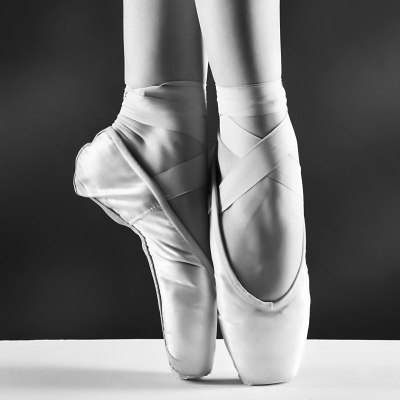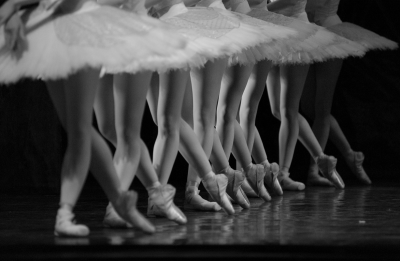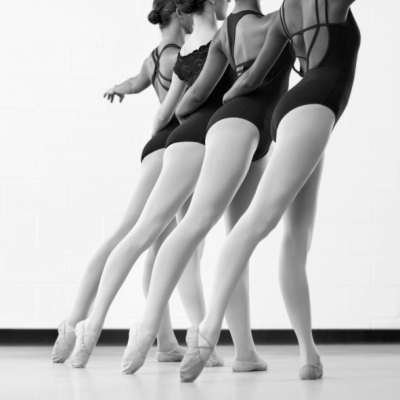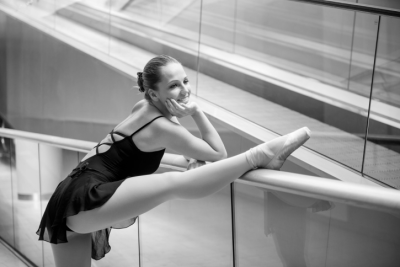
DREWITZ DANCE PRODUCTIONS LTD
CLASSES
PROGRAM DESCRIPTIONS
RECREATIONAL PROGRAMS A-B
A – Recreational Program (Age 3-4)
Morning classes are offered Mon-Thurs & Sat, 9:15-10:15. Additional class days and times can be requested. Class is comprised of 30 minutes each of Ballet and Tap. In Ballet, dancers will learn fundamental classical positions, basic understanding of posture, and traveling steps through fun and imaginative themes. In Tap, basic terminology and understanding rhythms and counting will be introduced. In both classes other disciplines will be introduced i.e. stretching, song and dance, jazz dance, and improvisation.
B – Recreational Program (Age 5-6) & (7-9)
Classes will begin after school at 4:15 – 5:30 (5:45) Monday & Wednesday’s* in Okotoks and Tuesday & Thursday’s for Calgary dancers. This program is for dancers who want to increase their training but not compete. Students receive the fundamental training to move into the competitive program in the future, or continue training on a non-competitive basis. Ballet will be taught under the Royal Academy of Dance method and examinations may be recommended. Although it is recommended that dancers take the complete program, individual classes may be selected.
Classes will begin after school at 4:15 – 5:30 (5:45) Monday & Wednesday’s* in Okotoks and Tuesday & Thursday’s for Calgary dancers. This program is for dancers who want to increase their training but not compete. Students receive the fundamental training to move into the competitive program in the future, or continue training on a non-competitive basis. Ballet will be taught under the Royal Academy of Dance method and examinations may be recommended. Although it is recommended that dancers take the complete program, individual classes may be selected.
*Days are subject to change depending on enrollment
COMPETITIVE PROGRAMS C-F
All new students in this division must set up an appointment for registration consisting of a short evaluation of skills for proper class placement. Current students will be placed by teacher recommendation. All students are required to compete but are assessed in their training program during the fall for routine selection. Selections will vary for each individual, depending on their readiness, experience, and class performance.
There are four stages of development in the competitive programs, Level 1-4, where dancers gradually increase their commitment and training time. Level 1 will train two evenings per week, Level 2-4 will train three evenings. Each level is carefully constructed to meet the varying stages of development in the competitive dancer.
Competitive choreography will mainly be on Saturday’s outside of regular training hours. There are outside fees for choreography, competition entry fees per routine, and costumes. These fees are invoiced in late fall and are invoiced for the total amount of routines selected and divided into three equal payments. A more detailed information letter is distributed in the fall, although we may begin some routines during our summer intensives where opportunities for choreography from our guest instructors may be available and these will be invoiced separately.
Generally, classes begin at 4:15 and end at 10:00 (Mon – Thurs). Classes begin with the youngest dancers first, ending with the oldest.
CLASS DESCRIPTIONS:
Ballet: All students are instructed in the Royal Academy of Dance syllabus (R.A.D.): www.radcanada.org for more information. Examinations are offered annually or bi-annually, depending on level of study and previous year of study. There are two streams of study: Graded (Pre-Primary – Grade 8) and Vocational (Intermediate Foundation – Solo Seal)
Tap: Younger dancers develop and drill their basic terminology and more experienced dancers combine this technique in more complicated rhythmic sequencing and patterns.
Jazz: Dancers will develop their flexibility, speed, while using their ballet technique. A basic warm up, across the floor technique and short combination is regularly taught. Other disciplines ‘fuse’ into this class depending on the style of choreography.
Lyrical/Contemporary: Lyrical is like ‘slow jazz’ where the dancer uses their ballet & jazz technique to interpret and convey the lyrics of a song through movement. Contemporary is a fusion of ballet and modern technique and can portray more abstract themes either with lyrics or instrumental music. Floor work, flexibility, and ballet & jazz technique are all components involved in these classes.
Musical Theatre: Training for the ‘triple threat’ performer, the dancer will explore singing, dancing, and acting. Dancers may learn a piece where they must ‘act’ out the character through exaggerated movement, work just on vocals and harmonies, prepare monologues, prepare an audition song, go through a ‘mock’ audition, read script and act out scenes, and explore other dance styles related to Broadway themes. Dancers can be considered for our musical productions when performing in this class.
Stretch and Conditioning: This class will work on basic stretching techniques and also work to the child’s individual needs in ‘stations’ in class. Other components will be cardio-vascular training, abdominal work, upper & lower body strengthening, progressions utilizing flexibility, nutrition and injury prevention, and basic acro. Dancers must understand their bodies and what areas they need to work on and continue this outside of class to gain the most progress throughout the year. This class, alone, will not change a dancer’s body conditioning and flexibility.
Hip Hop: Dancers focus on developing more freedom of style and understanding the details of music, body isolations, and street style techniques. Choreography can be very intricate fusing many forms together at once similar to tap technique.



